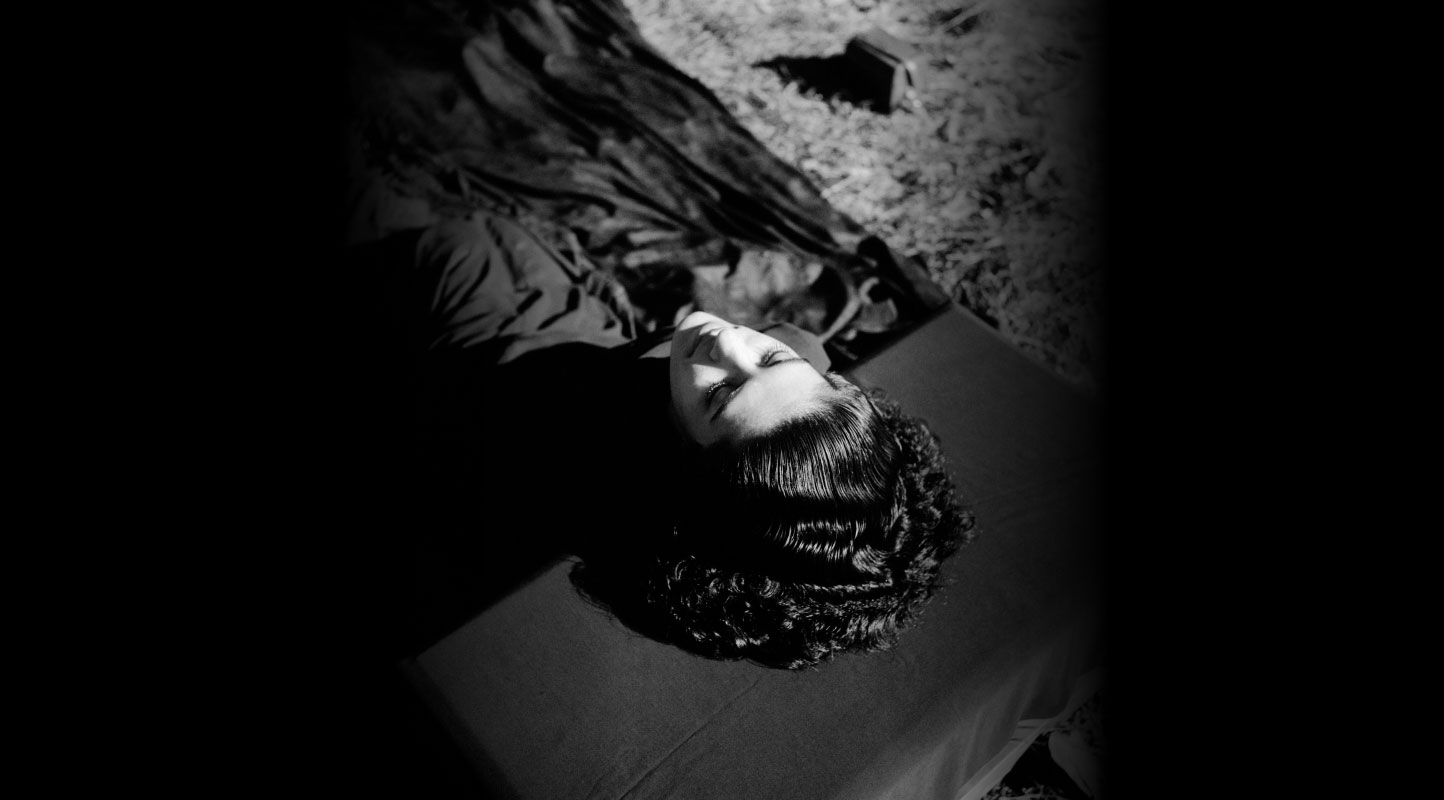Coastal Commons: Fisherwomen’s Struggle for Dignity
Porambokku, or the commons, refers to land and water bodies controlled by local communities, serving as vital resources for sustenance. In plain sight, any common—be it agricultural or coastal—may appear to represent the community’s shared space. However, a closer look reveals the intricate influence of socio-cultural factors like caste, religion, class and gender in negotiating the power dynamics that determine who truly controls and benefits from these spaces and who is able to access these spaces and share its resources. Moreover, the state has authority to decide over the management of Porambokku. This results in its use in the name of ‘welfare and development’ activities, often in collusion with intermediary castes, further alienating marginalised communities from Porambokku lands. In the context of ongoing contestations, images from fieldwork in the coastal commons around Puducherry help bring to light these tensions—in particular, the ways in which state investment in tourism has created new struggles for fisherwomen.
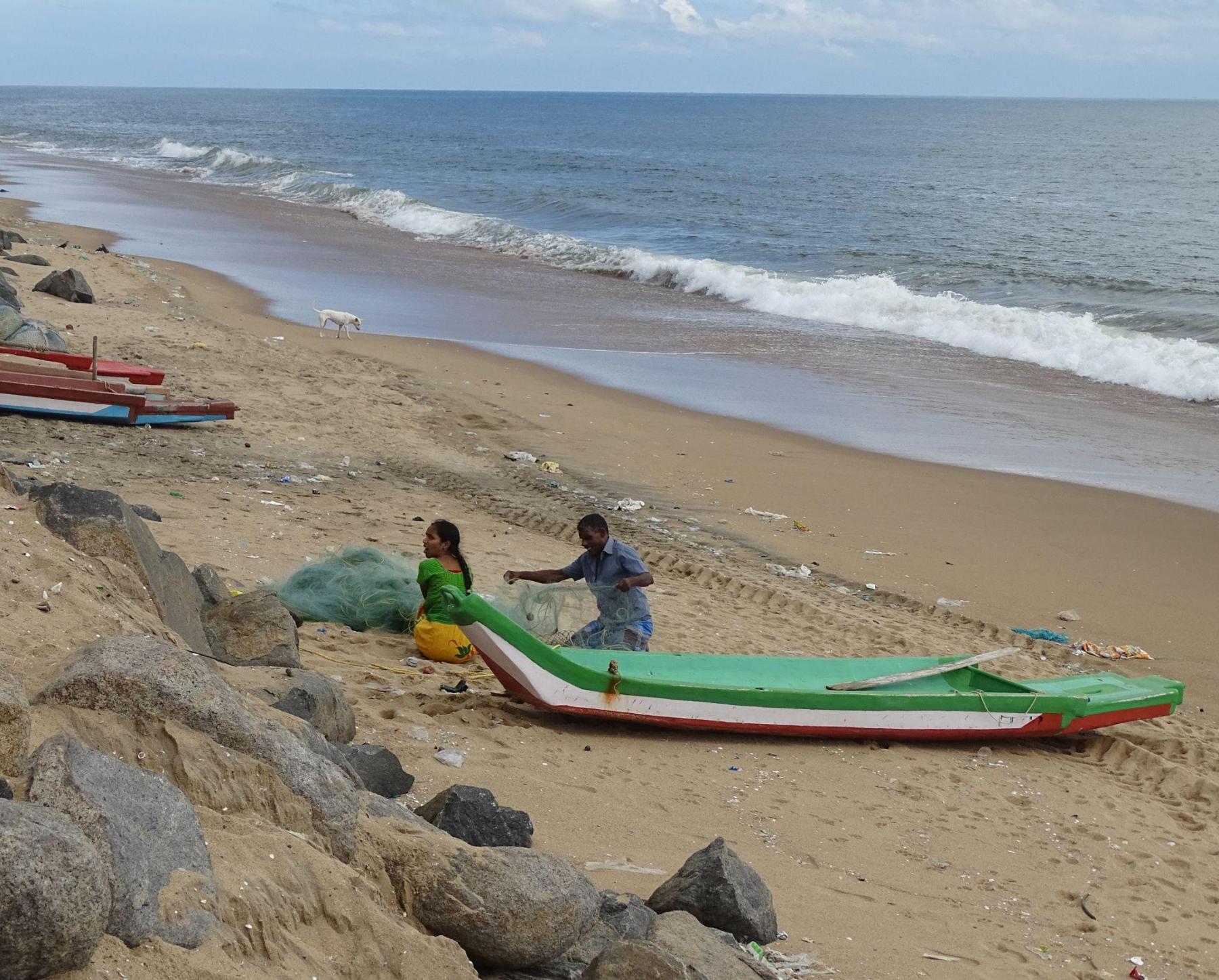
A fisherman and his wife mending their net on the shore (Photograph by Arunkumar A.S. Puducherry, 2024.)
The coast brings to mind an image of villages of fishing communities, and the coastal commons incorporates the everyday needs and livelihoods of the fisher community. Unlike agrarian spaces, these areas blend socio-economic and cultural activities in close proximity. A typical fishing village features fisherfolk’s boats parked beside their homes, huts for net mending and storing equipment, open spaces for drying fish and an auction centre for selling the catch, as well as the village temple—all essential elements of their closely interconnected lifestyle.
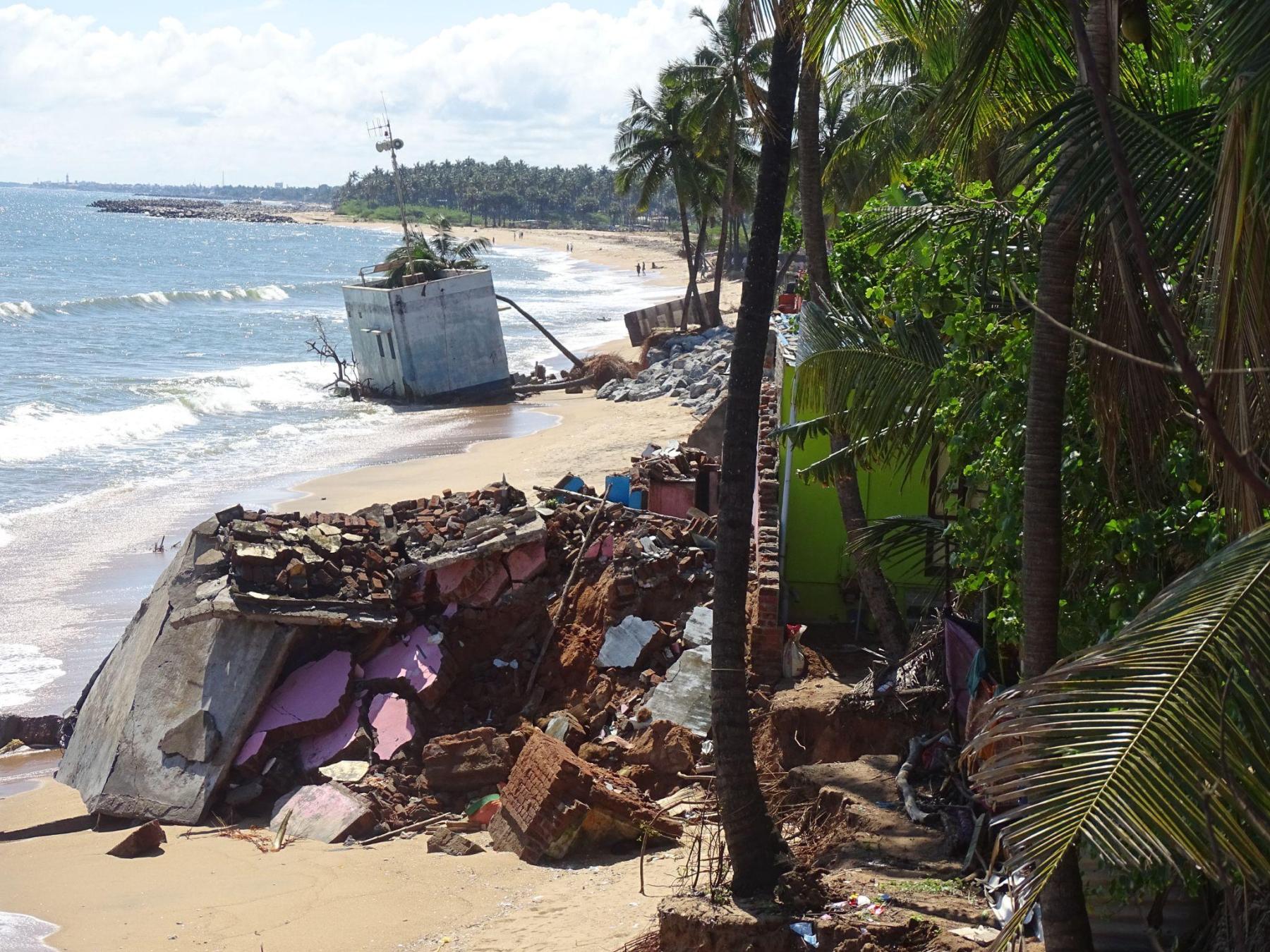
Houses of fisherpeople damaged by the coastal erosion. (Photograph by Arunkumar A.S. Pillaichavady, 2024.)
However, in Puducherry, these scenes have been replaced by groynes and tourist ventures. The northern part of Puducherry, extending from the harbour, is heavily affected by coastal erosion, while the southern region is increasingly dominated by tourism development projects. As a coastal town, Puducherry has become a hub for intensive tourism projects aimed at boosting government revenue, such as, for instance, the Pondy Marina at Vambakeerapalayam and the Blue Flag-certified beach at Veerampattinam. The Coastal Regulation Notification, intended to safeguard the traditional rights of indigenous communities, has proven inadequate in practice. A recently published Coastal Zone Management Plan (CZMP) map shows how most coastal regions are marked for tourism development.
As a result, fisherpeople face difficulties accessing the beach for mending and storing nets, while fisherwomen have lost their traditional spaces for drying fish. The fisher community protested to get back their traditional rights, such as livelihood, cultural and living spaces, but these struggles have only been successful to a limited degree. The Puducherry state allows tourist ventures like resorts, water sports, beach beautification and development, coastal carnivals and events. It also promises new livelihood opportunities for local residents by taking over coastal commons. However, these ventures make the fisherwomen’s livelihoods more vulnerable, leaving them more dependent on men and confining them further to their homes.
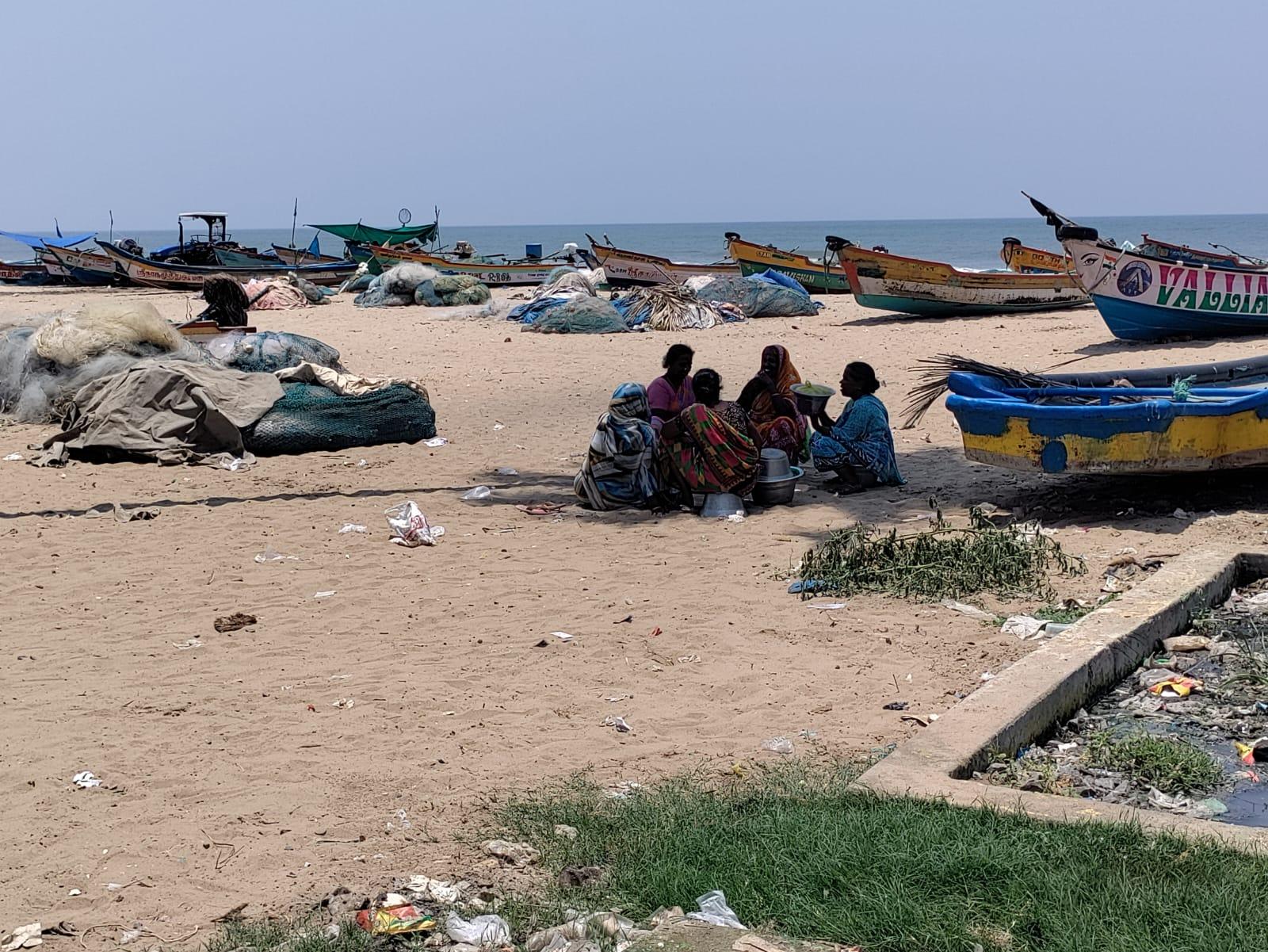
Headloader fisherwomen waiting for the auction. (Photograph by Arunkumar A.S. Veerampattinam, 2024.)
Fisherwomen had access to coastal commons for socio-cultural and economic purposes. The beach provides them space for auctioning fish, which are then taken by women to the hinterland. They also dry fish on the large open shore and have their own huts to store dried fish and other work equipment like vessels and boxes. These huts are used not only for storage but also provide a space to protect their dignity. When their worth or value is questioned and disrespected, they move to their storage huts and live there.
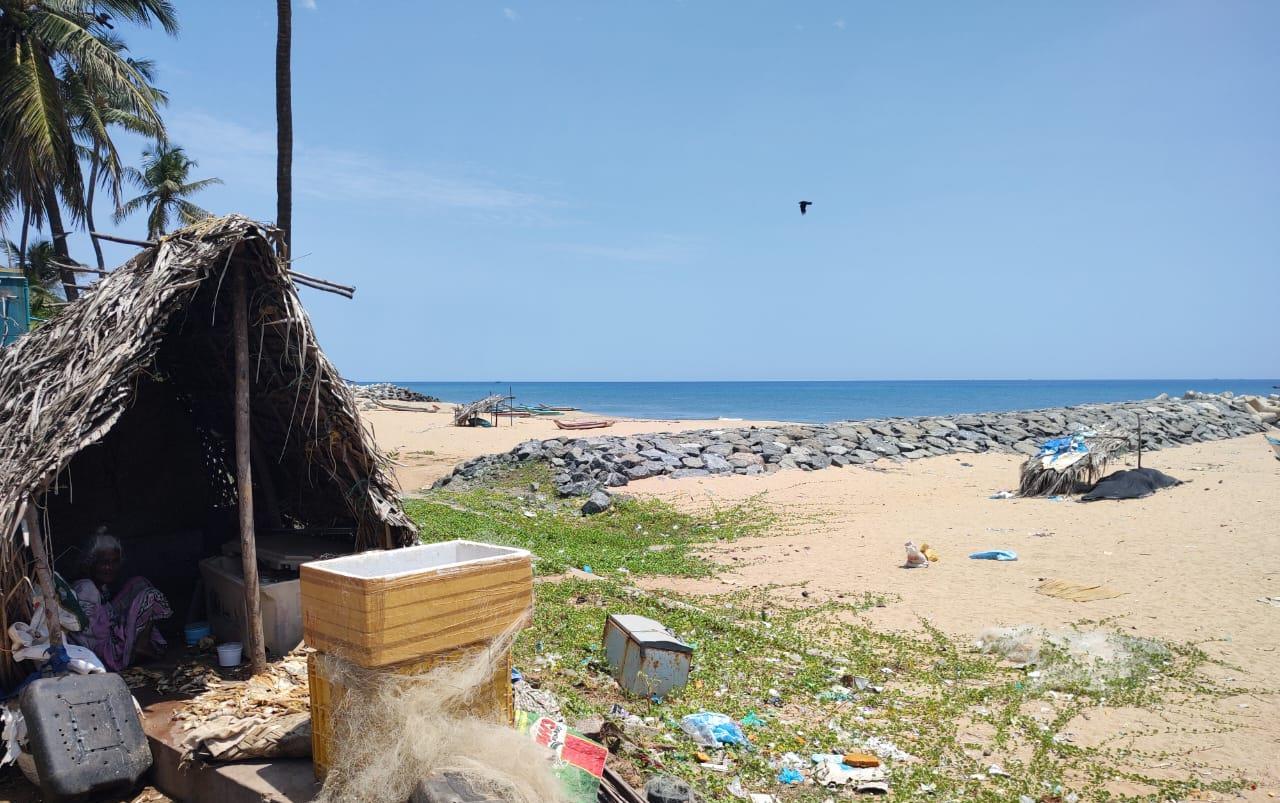
An elderly fisherwoman (aged 80) lives in a hut near the shore and sells dried fish because of conflict in the family. (Photograph by the author. Pillaichavady, 2024.)
One fisherwomen activist said, “Our grandmothers and mothers sold fish and lived with dignity. They have their own huts—like men—to store the dried fish. If someone in the family disrespects them, they move to their storage huts. But is the state giving (women) recognition for our work and our space?”
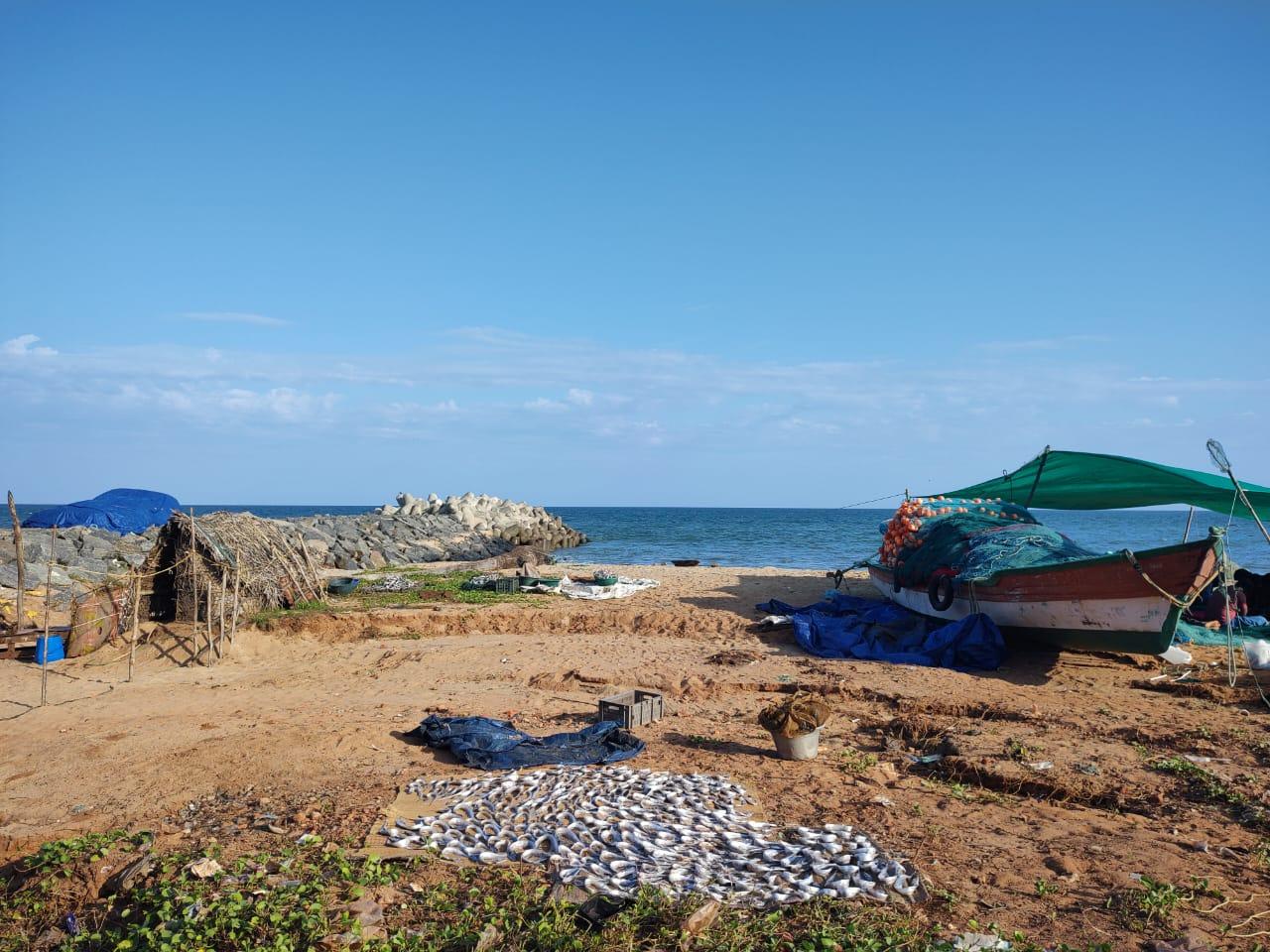
Fish are dried in the space in between the boats and the groynes. (Photograph by the author. Bommaiyarpalayam, 2023.)
Further, married women, along with their children, other women and elderly women, gather on the shore—after selling fish in the hinterland—to clean the fish for drying. They chat about happy things and struggles, supporting each other. One fisherwoman from Puducherry stated, "Even though selling fish is highly laborious work, we can decide our working days and times. This helps us look after our children and homes. And also, we do not have to work under someone else."
But the increase in tourism activities has encroached on the spaces of the fishing community, in particular, fisherwomen. The fishing community largely belongs to the Pattinavar caste here. Backwardness in terms of economic and social access cripples the community in its upward mobility. Despite their direct role in the fisheries economy, they are not recognised by the state and intermediary castes, resulting in their exclusion from the benefits of development. While fishermen are pushed to sell land to intermediary castes in cases when they have legal entitlements, fisherwomen are largely left out of these decision-making processes. Additionally, fisherwomen's access to the physical geography of the commons has also been adversely impacted owing to tourism.
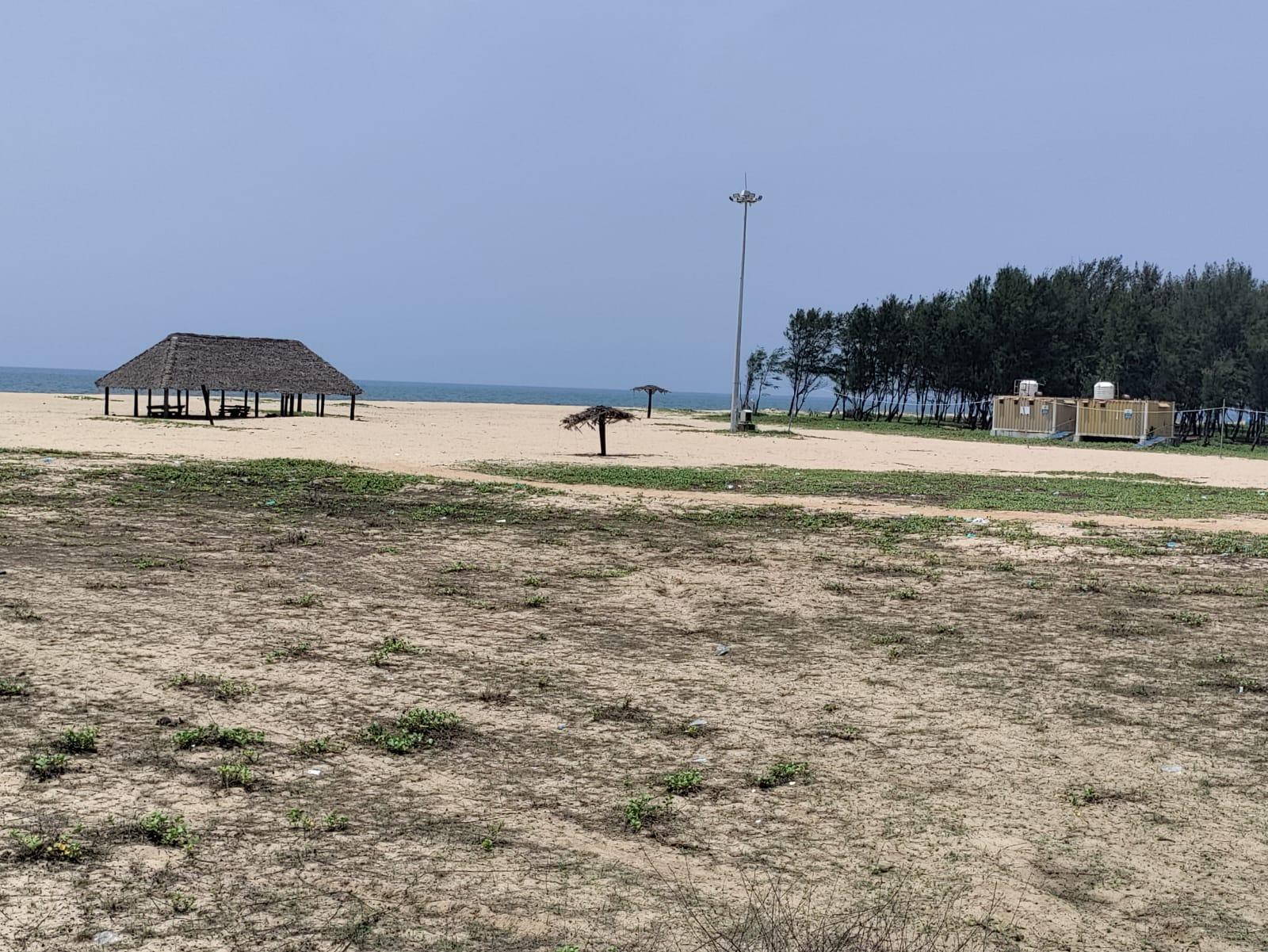
Resting places for tourists in Eden beach. (Photograph by Arunkumar A.S. Chinna Veerampattinam, 2024.)
Tourism in Puducherry revolves around beach partying. This is seen as ‘uncultural’ and men decide when and how women should access the beach. A fisherman stated,
"Pondicherry is becoming a worse place because of the bar culture. We often restrict women's access to the beach due to tourists from different places who do not understand our culture. This could negatively influence women and children. Moreover, many tourists are drunk and roaming on the beach, making it unsafe for women."
This has led to the confinement of women to their homes. The erosion of commons and access to shared space has also led to conflicts between men and women over the use of limited space.
Tourism, which promises secured jobs for local residents, fails to deliver on its promises as the skills required for the generated jobs are different and work expectations vary. Though fisherwomen face stigmatisation because of caste and the nature of their work, which is considered ‘unclean’ and ‘stinky’, they also face difficulties in finding other livelihood opportunities and struggle to meet the financial needs of their families. Thus, developmentalist ventures such as tourism become an agency of patriarchy, allowing it to intervene within a village to seize resources for capitalistic purposes. The promised livelihood opportunities are taken over by dominant castes and corporates.
The state's development activities, while promising new opportunities, often overlook the complex socio-cultural dynamics at play. It is crucial to recognise and address the marginalisation of fisherwomen, both in terms of access to Porambokku and in listening to the ways in which they voice and act to reclaim their spaces.
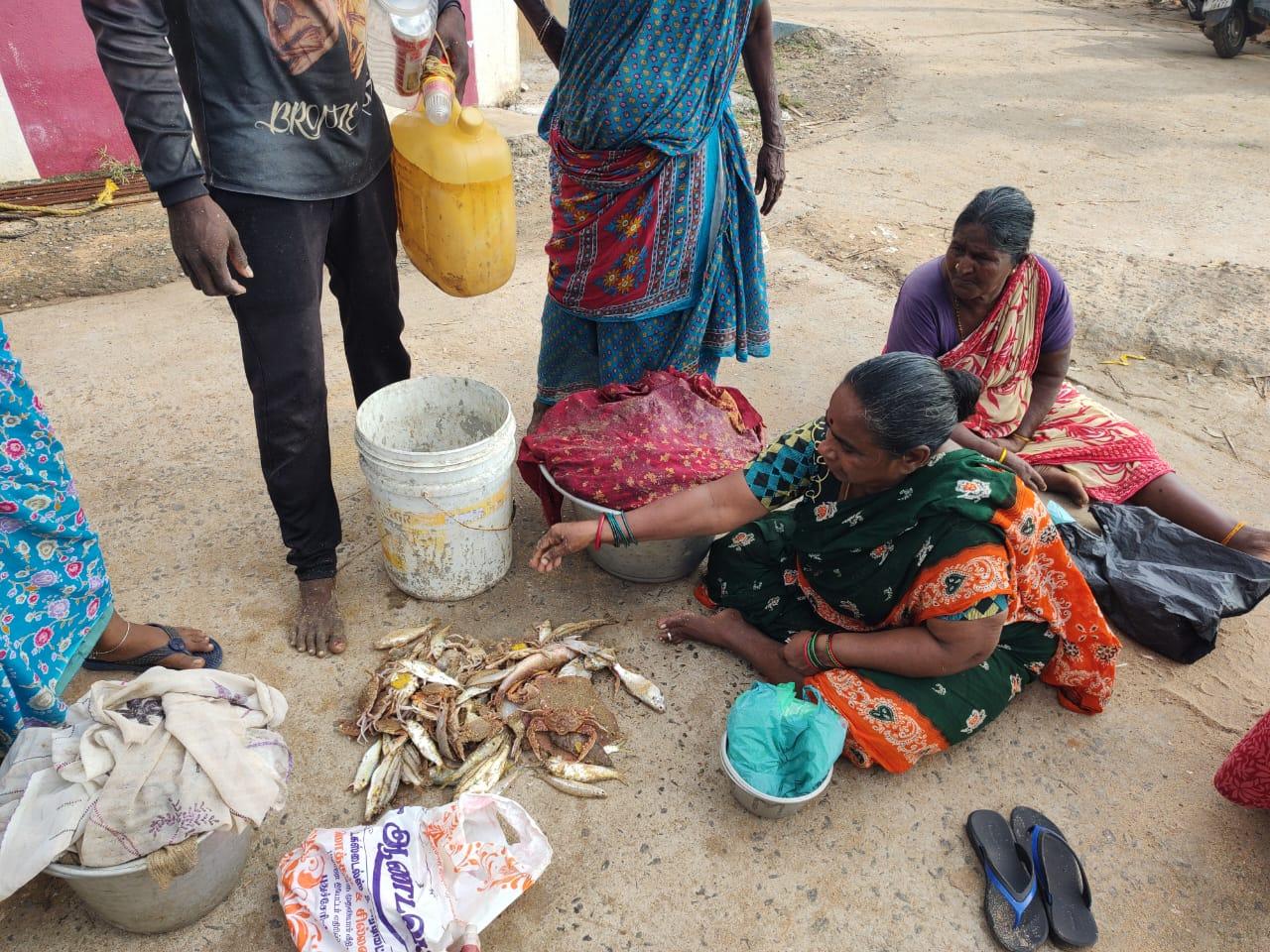
Women auctioning the fish in Pillaichavady village. (Photograph by the author. Pillaichavady, 2024.)
To learn more about the lives of people living in coastal zones, read Kavyasri Saravanan’s essay on Coastal Regulation Zones, Gulmehar Dhillon’s curated album of M. Palani Kumar’s work with the seaweed farmers of Tamil Nadu, Sukanya Deb’s conversation with Paribartana Mohanty and Ketaki Varma’s reflections on Sohrab Hura’s practice.



